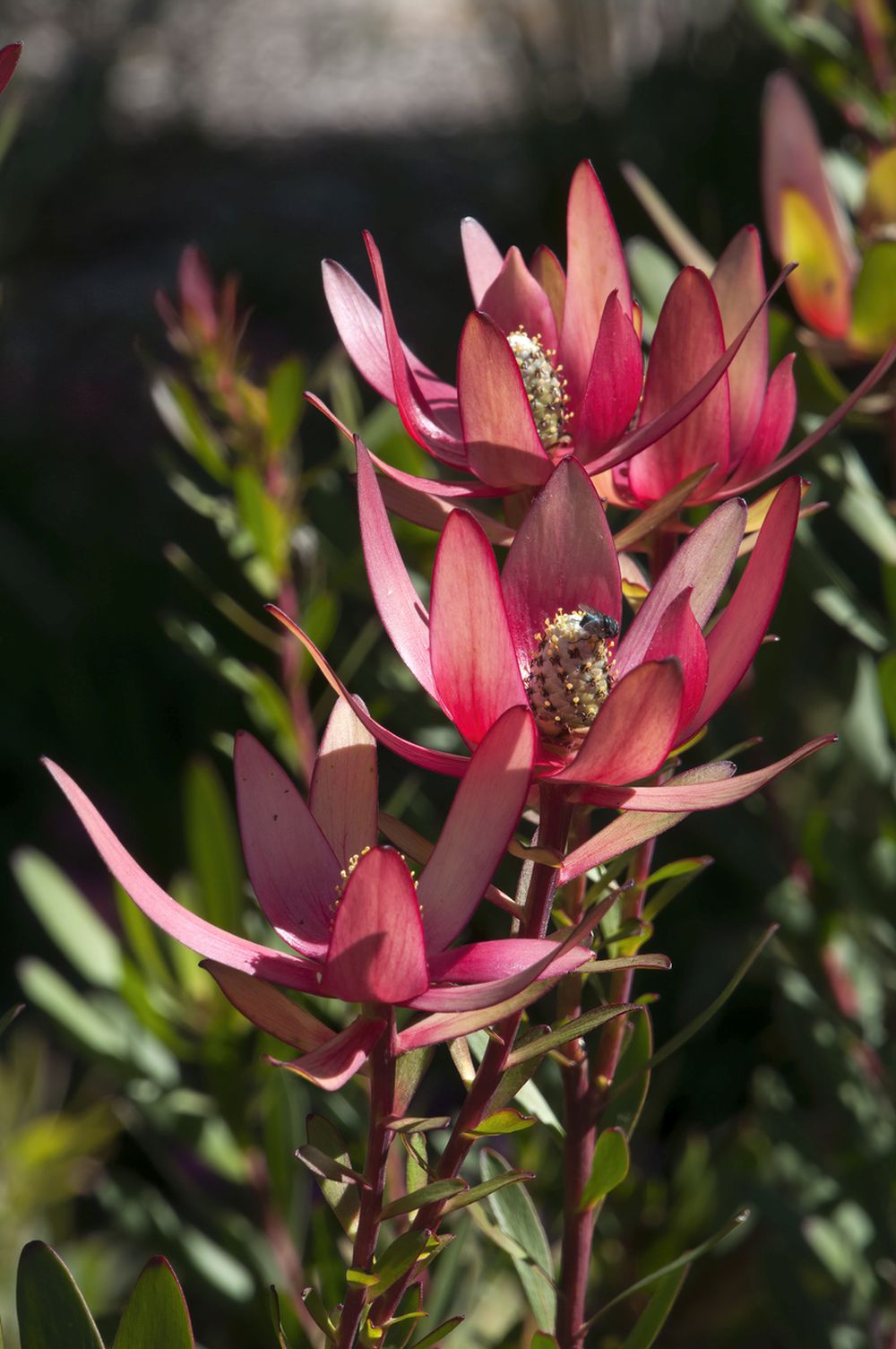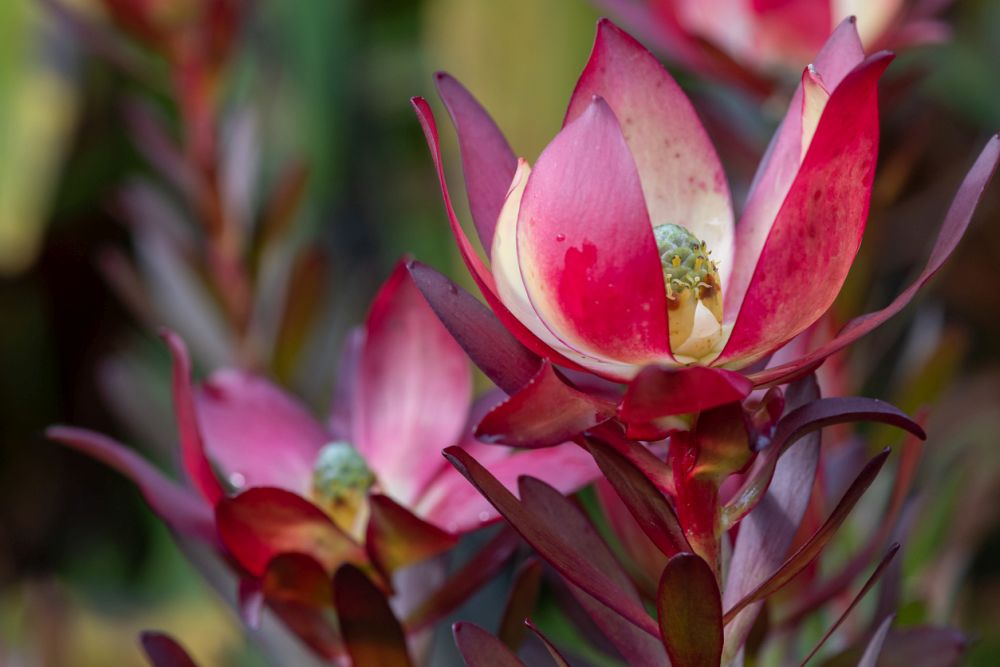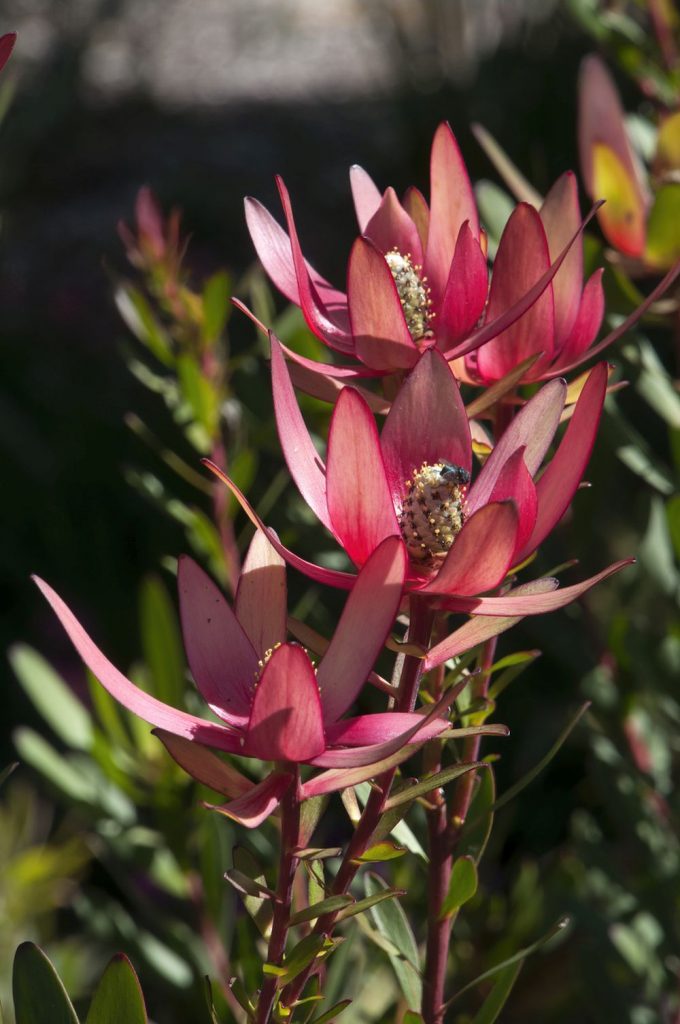Leucaderon Care: How to Grow & Care for the Silver Tree
Leucadendron varieties are arguably the brightest flowering shrubs you’ll ever find. If you’re living in a warm region, growing this shrub would be such a stellar idea since it’s drought tolerant and low maintenance. So, you want to learn the groundwork needed to keep the Leucadendron plant alive? Read on to find out more.
More About theLeucadendronPlant
This Shrub remains dense green throughout the year, many thanks to its potent tolerance to arid conditions. It’s a member of the Proteaceae family and native to South Africa, but it’s compatible with the growing conditions of other regions. Back in the 60s, the Silver Tree was introduced to New Zealand and mutated to the existing conditions fairly well.
So just you know, the name Leucadendron is a cocktail of two Greek words—‘Leukos’, which means white, while ‘dendron’ means a tree. Most varieties in the Leucadendron genus have bright foliage and bloom visually impressive flowers, especially during the spring season.
Even though a bright-looking plant might ostensibly seem hard to care for, this shrub has low maintenance needs, and the caring requirements are just a handful. Other common names—apart from ‘Silver Tree’—which this plant is known by include ‘Conebush’ and ‘Safari Sunset.’
The Safari Sunset shrub holds a number of stems capable of reaching up to 3’ feet tall, each holding inflorescence flowers that span to about 12’ inches wide. Its noticeable habit of growing in a round pattern makes this variety fill up spaces in the container that could be invaded by offsets falling from the parent plant, hence competing for essential nutrients.
5 Leucadendron Varieties You’d Consider Growing
- Pot of Gold: This variety grows in a shrub structure and is strikingly identified by its yellow flowers that bloom during spring. Even though it’s a drought-tolerant plant, the Pot of Gold prefers high humidity, you’ll need to moisten the soil quite regularly when it dries up till the plant matures entirely.
- Misty Sunrise: The Misty Sunrise is perfect for bordering and ground cover. It also has a bit of tolerance to frosting temperatures up to -5 degrees Celsius. As it grows older, the foliage will seem to appear blue/green. But for the period between late summer to spring, your Misty Sunrise could turn red, depending on the lighting conditions.
- Bella’s Buttons: The Bella’s Buttons variety is somewhat compact compared to other types in the Leucadendron genus. It looks glamorous when used either for bordering or when grown inside a container. Same as the Silver Tree plant, what you want to observe the most when growing this variety is drainage and acidity levels in the soil.
- Spring Blaze: With a formidable potential to reach up to 5’ feet, the Spring Blaze looks a lot more inviting when grown outdoors. One conspicuous thing about this variety is the foliage which is made of green leaves with a fluffy texture and a pink tone on the edges. The pink layer on the stems and tips of the leaves will begin to develop during Autumn, but the foliage will appear more radiant when the spring season checks in.
- Royal Ruby: You want to consider growing the Royal Ruby if especially you fancy bright red flowers a lot more than the typical tones which most other varieties in the Leucadendron genus will produce. The Royal Ruby will at times grow wild, so you want to prune it quite occasionally so you can maintain its shape and size.
Leucadendron Plant Caring Tips
Flowering & Fragrance
During the blooming stage, your Safari Sunset houseplant will form a few stalks that hold inflorescence flowers. Although the Leucadendron genus is known to have a number of flowering varieties, don’t expect the blooming phase to last long. While the flowers might look tiny, the petals will have a bright tone and resemble a modified leaf.
A few members of the Proteaceae family are dioecious plants. And that practically suggests they have both male and female flowers. One thing you’ll note about the male flowers is they’re brighter and more attractive, while the female ones are genetically more inclined to seeds and cones production.
Light & Temperature
Most varieties under the Leucadendron genus, including the Safari Sunset plant, prefer to sit under the full sun. Aside from that, you want to blend the light conditions with the right set of humidity levels. Keep the growing medium under an environment with medium to slightly high humidity.
It also needs enough air circulation to prevent condensation on the surface of the leaves and boost transpiration.If you’re looking to own a couple of this variety in your home, don’t keep them compactly together.
Crowded plants compete for nutrients, and failing to space out the cuttings during propagation will disorient the normal development of roots. It’s also worth noting that this plant thrives a lot better under USDA hardiness zones 9 to 11.
Soil & Transplanting
The Safari Sunset, or if you like, Silver Tree, isn’t too sensitive as far as its potting needs are concerned. All you need to cross-check is the drainage capacity. Compared to other potted houseplants, including those that also juggle as groundcover plants, this shrub prefers soil that’s a bit more acidic.
If the soil test results show that’s it’s less acidic, you want to top-dress the soil using peat moss. To test the pH levels, you can purchase a low-priced soil test kit and have insights on what to add to the potting soil.
And if you plan to grow this Leucadendron variety outdoors, you can amend the soil with elemental sulfur at the ratio of 5 to 10 pounds for every 1,000 feet, depending on the pH levels of the garden space. Make sure the container has a few drainage holes for letting out excess water, which could damage the roots of your Safari Sunset houseplant.
One of the top-tier hacks of keeping this plant alive for decades is to let the roots rest easy in one container a bit longer. So, transplanting this shrub won’t be necessary if you use a medium-sized container for potting. Always grow each Safari Sunset shrub in its own container to give it more space for air circulation.
Watering & Feeding
This shrub is outrightly drought tolerant with adaptations to help it survive mild neglect, especially during the dry months. So, you want to water your Safari Sunset plant only when it’s necessary. Wait for the first few inches of the topsoil to dry up completely before watering it again.
When the temperatures are warm, especially during spring and summer, water your Safari Sunset shrub once every week. Keep the leaves from getting wet or making contact with other plants. It needs enough space to stay far from infectious diseases. You only need to feed your Leucadendron plant when it begins to grow at a stunted pace.
Use soluble fertilizer only once every growing season and check the label to confirm whether it’s low in phosphorus since too much of it could kill the plant. Dilute the fertilizer with water before feeding so its strength can be cut back to half. The nitrogen composition also needs to be low concentrated.
Grooming & Maintenance
This kind of shrub isn’t hard to care for, so grooming won’t be gravely needed. You just want to pluck off parts that seem to show signs of fungal infection or look entirely wilted.
How to Propagate the Silver Tree
There are two viable ways to go about the whole propagation exercise—stem cuttings and seeds. Seeds tend to take a bit longer so they can develop into mature plants. But if you can trust your patience, then the best time to sow the seeds is during spring or autumn. Autumn could be a perfect alternative for sowing if the temperatures during summer are dry and hot.
Amending the seedlings’ nursery with vermiculate would help retain some moisture and maintain the optimal temperature levels. Depending on the prevailing conditions, the seeds will take anywhere between 30-60 days to germinate. To propagate the Silver Tree using cuttings, you need to follow these easy steps:
- Prepare the potting soil by mixing ¾ parts of coarse sand with ¼ part of peat moss—to enhance drainage and calibrate the pH levels.
- The cuttings need to be at least 3’ inches long and have most of their leaves plucked off.
- Let each cutting hold about three leaves and leave it outside so the open wounds can heal.
- Treat the base part with hardwood strength hormone powder if you want your cuttings to form sturdy and healthy roots much quicker.
- For both seeds andcuttings, you want to keep the soil moist, especiallyduring the premature sprouting stage, but be careful not to leave the soil drenched since rotting might occur.
Problems with the Silver Tree
Most varieties that fall under theProteaceae family are prone to root rot. Most pests will find your shrub habitable if there isn’t enough air circulation. Root rot, on the other hand, is a condition that’s hard to treat once it occurs, so keeping it from happening would ultimately be the most formidable solution.
Apart from good air circulation, make sure the potting soil is permeable enough to supportdrainage.Don’t let your Silver Tree touch other plants since that could cause it to suffer from fungal infections. Use sterilized tools when pruning or plucking a few stem cuttings for propagation.
Unusual dark spots appearing on the leaves could be a sign to show that your Silver Tree has actually been infected by a fungal disease. If the condition worsens to form powdery mildew, you can sprayorganic fungicideon the affected areas.



